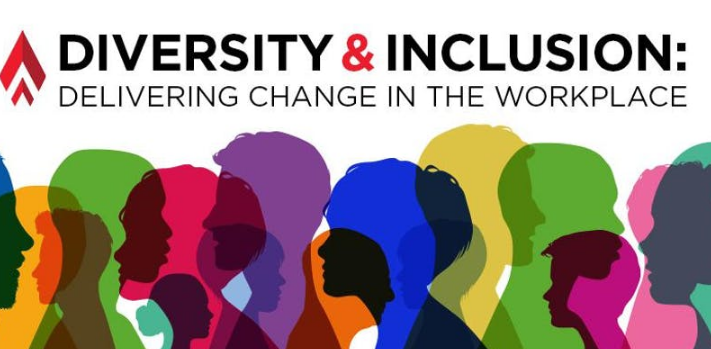Inclusive leaders tend to share six signature traits that not only promote diversity on their teams, but also improve their capacity to innovate and deal with uncertainty, according to a study of inclusive leaders from six locations worldwide, conducted by Deloitte Australia. How many of these traits do you possess?
The IT profession in the U.S. doesn’t have a great reputation for diversity and inclusion. While Asian Indians are well represented—making up 22 percent of the workforce in computer and mathematical occupations, according to the Bureau of Labor Statistics—the underrepresentation of women, African Americans, and Latinos in IT and other STEM fields has become a concern.
It’s time for CIOs to make diversity and inclusion a priority, and there may be no better place to start than with their own leadership styles.
A study of inclusive leaders from Australia, New Zealand, Singapore, Hong Kong, Canada, and the U.S., conducted by Deloitte Australia¹, shows that such leaders possess six fundamental traits that foster diversity on their teams. These traits allow executives and managers to engage much more effectively with a wide range of culturally, demographically, and attitudinally diverse stakeholders. They also help leaders access a broader spectrum of ideas and perspectives, which can improve their decision-making and their ability to innovate, handle uncertainty, and anticipate the future. What CIO doesn’t want to develop in those areas?
Even if current IT teams aren’t particularly diverse from a gender, cultural, or thought perspective, CIOs are otherwise surrounded by diversity. Consider the global nature of IT. Many CIOs today outsource technology services to Argentina, Brazil, Ireland, Poland, India, and Malaysia. Markets, customers, ideas, and talent are growing more diverse as businesses expand globally. And in many cases, CIOs and their IT organizations are developing technologies for employees and customers around the world.
Definitions of and approaches to inclusive leadership tend to vary worldwide, and the six characteristics listed below represent just one conceptual framework for developing inclusive behaviors and encouraging diversity.
Commitment. Cultivating a diverse, inclusive workforce takes time and energy, two of a leader’s most precious commodities. So what motivates some executives to champion this issue? In addition to a belief in the business case, inclusive leaders are driven by their values, including a deep-seated sense of fairness that, for some, is rooted in personal experience. Inclusive leaders believe creating a welcoming culture begins with them, and they possess a strong sense of personal responsibility for change. When executives devote time, energy, and resources to nurturing inclusive workforces—by investing in people and inspiring others to share their passion and goals—their actions signal a true commitment.
Courage. Inclusive leaders demonstrate courage in two ways. First, they aren’t afraid to challenge entrenched organizational attitudes and practices that yield homogeneity, even if their recommendations are politically or culturally unpopular. Nor are they afraid to display humility by acknowledging their personal limitations and seeking contributions from others to overcome them. Some leaders find it difficult to admit they don’t have all the answers; in that respect, courage and humility go hand in hand.
Cognizance of bias. Inclusive leaders understand that personal and organizational biases narrow their field of vision and preclude them from making objective decisions. They exert considerable effort to identify their own biases and learn ways to prevent them from influencing talent decisions. They also seek to implement policies, processes, and structures to prevent organizational biases from stifling diversity and inclusion. Without such measures, inclusive leaders understand that their natural inclination could lead them toward self-cloning, and that operating in today’s business environment requires a different approach.
Curiosity. Open-mindedness, a passion for learning, and a desire for exposure to different ideas have fast become leadership traits crucial to success, especially in challenging times.² Curiosity and openness are hallmarks of inclusive leaders, who hunger for other perspectives to minimize their blind spots and improve their decision-making. In addition to accessing a more diverse array of viewpoints, inclusive leaders’ ability to engage in respectful questioning, actively listen to others, and synthesize a range of ideas makes the people around them feel valued, respected, and represented. Inclusive leaders also refrain from making fast judgments, knowing snap decisions can stifle the flow of ideas on their teams and are frequently tinged with bias.
Cultural intelligence. Knowledge of other cultures is essential for CIOs whose work takes them, for example, to offshore development and operations centers. Beyond “book” knowledge, cultural intelligence connotes leaders’ ability to change their styles in response to different cultural norms. For example, culturally intelligent leaders who are typically extroverted and demonstrative will make an effort to show restraint when doing business with individuals whose cultures value modesty or humility. They regulate the speed and tone of their speech and modify their nonverbal behaviors—gestures, facial expressions, body language, and physical interactions—as situations dictate. In addition to understanding other cultures, these leaders also demonstrate self-awareness of their own culture, recognizing how it shapes their worldview and how cultural stereotypes can influence their expectations of others.
Collaborative. Inclusive leaders understand that, for collaboration to be successful, team members must first be willing to share their perspectives. To that end, they create an environment in which all individuals feel empowered to express their opinions freely with the group. They also realize that diversity of thinking is critical to effective collaboration; thus, they pay close attention to team composition and team processes. For example, they prevent teams from breaking into subgroups, which can weaken relationships and create conflict. They also engender a sense of “one team” by creating a group identity and shared goals, and by working to ensure team members understand and value each other’s knowledge and capabilities.
—by Bernadette Dillon, director, and Juliet Bourke, partner, Human Capital Consulting, Deloitte Australia



